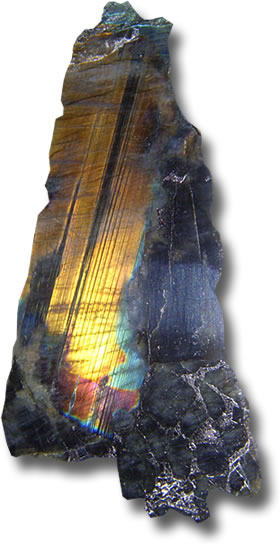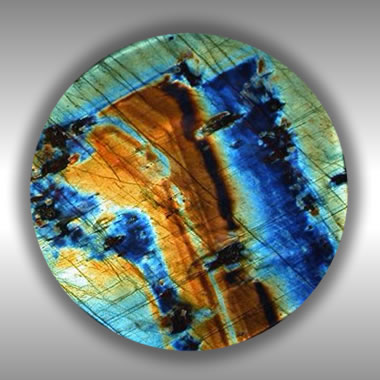Spectrolite Gemstones

Introduction
Spectrolite is a gemstone renowned for its iridescent play of colors. Originating from Finland, spectrolite is a variety of labradorite that was first discovered in the town of Ylämaa in the 1940s. Its name comes from the word "spectra" because of the spectral colors that dance across its surface when light hits it.
If you're curious about the broader labradorite family, visit our detailed labradorite gemstone information covering history, properties, and varieties.
History and Discovery
Some rare specimens of labradorite display a full spectrum of colors, not just violet, blue, and green, but also yellow, orange, and red. These special ones earned the name spectrolite. The term was coined by Finnish geologist Aarne Laitakari (1890-1975), who was the director of the Geological Survey of Finland. His son, Pekka, found the first spectrolite deposit in Ylämaa, South-Eastern Finland near the Russian border, while working on the Salpa Line fortifications in 1940.
Physical Properties
Labradorite stands out for its remarkable iridescence. This schiller, or metallic luster, appears when light strikes the stone from certain angles. Typically, these metallic tints are violet, blue, and green. This effect is so distinctive that it's called labradorescence. Experts think it results from very fine platelets of different compositions, plus tiny inclusions of ilmenite, rutile, and possibly magnetite, which diffract the light.
Spectrolite and labradorite are part of the plagioclase feldspar group, which mixes sodium and calcium aluminum silicates. Other members include sunstone and andesine. Labradorite rates 6 to 6.5 on the Mohs hardness scale and has a specific gravity of 2.69 to 2.72.

To learn more about the captivating iridescence, explore labradorite iridescence and its mystic glow characteristics.
Metaphysical Properties
Disclaimer: The metaphysical properties described here are based on traditional beliefs and folklore. They are not supported by scientific evidence and should not replace professional medical advice.
Spectrolite is thought to hold powerful metaphysical qualities that boost strength, intuition, and creativity. It's said to deepen one's spiritual connection and shield against negative energies. Some folks believe it can spark the imagination and encourage artistic expression. If you're into crystals, you might find this stone intriguing for those reasons.
Mining and Availability
The main mining spot for spectrolite is in the quarries of Ylämaa, where experienced miners pull the gemstone from deep in the earth. Spectrolite is seen as a rare and valuable gemstone because of its limited supply and striking appearance. Its price can shift based on size, color intensity, and overall quality.
Uses in Jewelry
Spectrolite gemstones can craft stunning pieces that highlight their mesmerizing colors and unique charm. Rings, necklaces, earrings, and bracelets featuring spectrolite bring a touch of elegance and mystery to any outfit.
Frequently Asked Questions
What is spectrolite?
Spectrolite is a variety of labradorite known for its full spectrum of iridescent colors, including violet, blue, green, yellow, orange, and red.
How does spectrolite differ from regular labradorite?
While labradorite typically shows violet, blue, and green iridescence, spectrolite displays a broader range of colors, making it rarer.
Where is spectrolite found?
Spectrolite is primarily mined in Ylämaa, Finland, near the Russian border.
What are the physical properties of spectrolite?
It has a hardness of 6 to 6.5 on the Mohs scale and a specific gravity of 2.69 to 2.72, belonging to the plagioclase feldspar group.
Does spectrolite have any spiritual or healing benefits?
According to beliefs, it may promote strength, intuition, and protection, but these claims are not scientifically proven and should not substitute for medical care.

